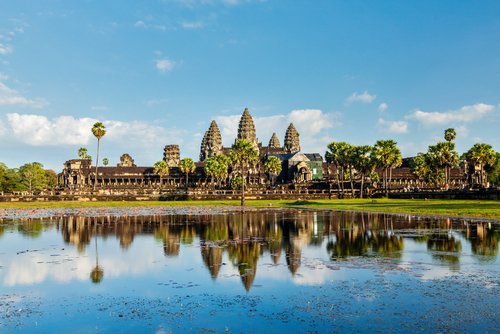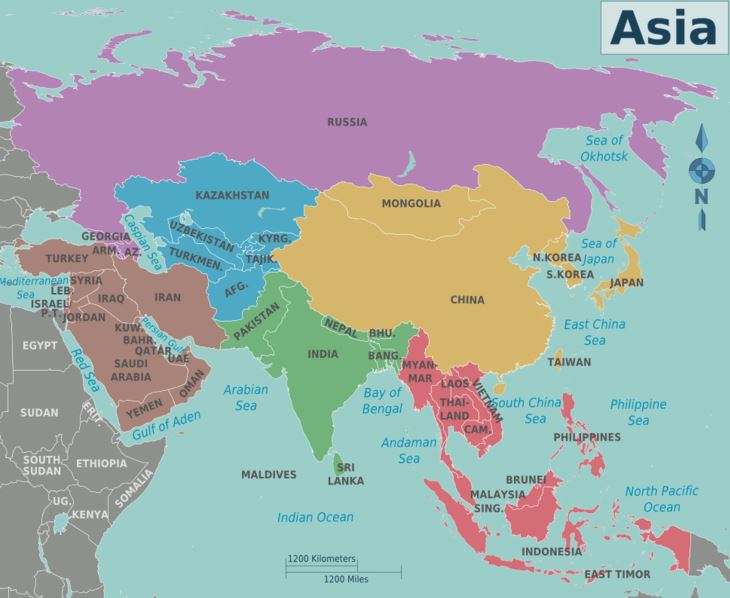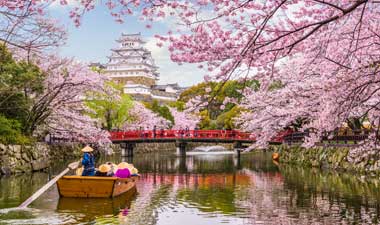All Countries
Anguilla
Antigua
Argentina
Aruba
Australia
Austria
Barbados
Belgium
Belize
Bermuda
Bhutan
Bolivia
Botswana
Brazil
British Virgin Islands
Cambodia
Canada
Cayman Islands
Chile
China
Colombia
Costa Rica
Croatia
Curacao
Czech Republic
Denmark
Dominican Republic
Egypt
England
Fiji
Finland
France
French Polynesia
Germany
Greece
Honduras
Honshu
Hungary
Iceland
India
Indonesia
Ireland
Israel
Italy
Jamaica
Japan
Jordan
Kenya
Laos
Malaysia
Maldives
Malta
Mexico
Monaco
Montenegro
Morocco
Mozambique
Namibia
New Zealand
Nicaragua
Northern Ireland
Oman
Panama
Peru
Poland
Portugal
Puerto Rico
Qatar
Rwanda
Saudi Arabia
Scotland
Seychelles
Singapore
Slovenia
South Africa
Spain
St. Barthelemy
St. Kitts and Nevis
St. Lucia
St. Vincent and the Grenadines
Sweden
Switzerland
Taiwan
Tanzania
Thailand
The Islands Of The Bahamas
The Netherlands
The Philippines
Turkey
Turks & Caicos
U.S. Virgin Islands
United Arab Emirates
United States
Vietnam
Zambia
All States
00
AB
AZ
BC
CA
CO
CT
DC
FL
GA
HI
IL
KY
LA
MA
MD
ME
MN
MO
MT
NC
NE
NF
NM
NV
NY
OH
ON
OR
PA
QC
RI
SC
TN
TX
UT
VA
VT
WA
WI
WY
All Cities
Abu Dhabi
Adelaide
Agios Nikolaos
Aix-en-Provence
Alcala
Alexandria
Algarve
Almancil
Alula
Amalfi
Amalfi Coast
Ambergris Cay
Ambergris Caye
Amelia Island
Amsterdam
Anacapri
Arenal
Arezzo
Arusha
Arusha, Karatu
Arzachena
Asheville
Aspen
Atacama
Athens
Atlanta
Auckland
Austin
Aventura
Avignon
Avon
Bacalar
Bajos del Toro
Bal Harbour
Bale
Bali
Baltimore
Banff
Bangkok
Banyalbufar
Bar
Barcelona
Basel
Bath
Beaver Creek
Beijing
Belfast
Bellagio
Berkeley
Berlin
Bern
Beverly Hills
Big Sky
Big Sur
Bilbao
Bluffton
Boca Raton
Bogota
Bologna
Bora Bora
Bordeaux
Boston
Bozeman
Brussels
Budapest
Buenos Aires
Cabo San Lucas
Cairns
Cairo
Calistoga
Cambridge
Cancun
Cannes
Canouan Island
Canyon Point
Cap d' Antibes
Cap Estate
Cape Elizabeth
Cape Town
Cappadocia
Carlsbad
Carmel
Carolina
Cartagena
Castelnuovo Berardenga
Celebration
Cernobbio
Champillon
Chantilly, Oise
Charleston
Chatham
Chiang Mai
Chiang Rai
Chicago
Cincinnati
Co Kildare
Co Limerick
Co. Clare
Coconut Grove
Cognac
Conca dei Marini, Amalfi Coast
Cong, Co Mayo
Copenhagen
Coral Gables
Cork
Coronado
Cortina d
Corvara (BZ) Alta Badia
County Kerry
Crafers
Crans-Montana
Crete
Culver City
Cusco
Cuzco
Dallas
Dana Point
Darby
Del Mar
Denver
Desaru Coast
Destin
Doha
Dubai
Dublin
Dubrovnik
Duck
Duck Key
Durham
East Hampton
Easter Island
Edgartown
Edinburgh
El Chalten
El Jadida
Elciego
Elounda
Encinitas
Engelberg
Estoril
Farmington
Florence
Fogo Island
Forestville
Fort Lauderdale
Fort Worth
Forte dei Marmi
Frankfurt
Franschhoek
French West Indies
Frisco
Funchal
Funchal, Madeira
Galway
Gardiner
Gardone Riviera
Gateway
Geneva
Geneve
Glasgow, Lanarkshire
Glenorchy
Glyfada
Gold Coast
Goleta
Granada
Grand Cayman
Grand Cul De Sac
Greenough
Greenville
Guanacaste
Gustavia
Half Moon Bay
Hamburg
Hamilton
Hana
Hanoi
Hawley
Healdsburg
Helsinki
Herceg Novi
Ho Chi Minh City
Hoedspruit
Hollywood
Hong Kong
Honolulu
Hot Springs
Houston
Hue
Huntington Beach
Ibiza
Incline Village
Indian Wells
Inhambane
Interlaken
Inverness
Irvington
Isla Mujeres
Islamorada
Isle of Palms
Istanbul
Jackson
Jackson Hole
Jaipur
Jakarta
Jasper
Jeddah
Jerusalem
Jodhpur
Johannesburg
Kaikoura
Kailua Kona
Kansas City
Kapalua
Kea Island
Kennebunk
Kennebunkport
Kerkyra
Keswick
Key Largo
Kiawah Island
Killarney
Koh Samui
Kohala Coast
Kohler
Koloa
Kowloon
Krakow
Kyoto
La Fortuna
La Quinta
La Romana
Laguna Beach
Lahaina
Lake Como
Lake Louise
Lake Lucerne
Lamego
Las Vegas
Lausanne
Lecce
Lenox
Lihue
Lima
Lisbon
Little Torch Key
Livingstone
Ljubljana
London
Los Angeles
Los Cabos
Los Olivos
Louisville
Luang Prabang
Lucerne
Lugano, Ticino
Lyon
Maasai Mara
Madrid
Mah
Mahe Island
Makgadikgadi Pans
Male
Mallorca
Malolo Island
Manchester Village
Manila
Marana
Marathon
Marbella
Marrakech
Marseille
Masai Mara
Maun
Maynooth
Meadows of Dan
Meads Bay
Melbourne
Menaggio
Merida
Messinia
Mexico City
Miami
Miami Beach
Middleburg
Milan
Minato-ku, Tokyo
Minneapolis
Misiones
Montauk
Monte Carlo
Montego Bay
Montreal
Montu
Moorea
Mosquito Island
Mpumalanga
Mugla
Mumbai
Munich
Mykonos
Nairobi
Nanyuki
Napa
Naples
Nashville
Nassau
Natadola Bay
Necker Island
New Delhi
New Orleans
New York
Newport
Newport Beach
Newport Coast
Nice
Ninh Thuan
Nizwa
Normandy
North Male' Atoll, Male
North San Diego / Carlsbad
Northern Territory
Nyungwe
Oahu
Oceanside
Ocho Rios
Oia, Santorini
Ojai
Okavango Delta
Omaha
Orlando
Osaka
Otranto
Pacific Harbour
Palawan
Palermo
Palm Beach
Palm Beach Gardens
Palm Coast
Palm Cove
Palm Springs
Palma
Palo Alto
Panama City
Paradise Island
Paradise Valley
Paris
Park City
Paro
Paros Island
Pasadena
Patagonia
Pebble Beach
Perez Zeledon
Perth
Perthshire
Perugia
Philadelphia
Philipsburg
Phoenix
Phuket
Picton
Placencia
Playa del Carmen
Playa Mujeres
Portimao
Portland
Porto
Porto Cervo
Porto Heli
Portofino
Portovenere
Positano
Prague
Pray
Providenciales
Puerto Natales
Puerto Vallarta
Punta Cana
Punta de Mita
Punta Mita
Puntarenas
Pyrgos Kallistis, Santorini, Cyclades
Quebec City
Queensland
Queenstown
Quintana Roo
Raa Atoll
Rabat
Rancho Mirage
Rancho Palos Verdes
Rancho Santa Fe
Rangiroa
Rapaura
Ras Al Khaimah
Ravello
Ravello, Amalfi Coast
Reggello
Rendezvous Bay
Reykjavik
Rio de Janeiro
Rio Grande
Rio San Juan
Rivas
Riviera Maya
Riviera Nayarit
Roatan
Rodney Bay
Rome
Roquebrune-Cap-Martin
Rotorua
Ruhengeri
Sa Pobla
Sabi Sand
Sabi Sands
Saint Jean Cap Ferrat
Saint-Tropez
Salzburg
San Anton
San Antonio
San Diego
San Francisco
San Ignacio
San Jos
San Jose del Cabo
San Juan
San Miguel De Allende
San Pedro
San Sebastian
Sandys
Sanremo
Sant Tom
Santa Barbara
Santa Fe
Santa Margherita Ligure
Santa Monica
Santa Teresa, Puntarenas
Santiago
Santorini
Sarasota
Saratoga
Sardinia
Saturnia
Savannah
Savelletri di Fasano
Savudrija
Savusavu
Sciacca (Agrigento)
Scottsdale
Scrub Island
Sea Island
Seattle
Sedona
Serengeti
Serengiti
Seville
Shaharut
Shanghai
Shima-shi
Shimogyo Ward
Shoal Bay East
Sicily
Siem Reap
Siena
Sigatoka
Singapore
Singer Island
Sintra
Snowmass Village
Sonoma
Sonora Island
Sorrento
Sosua
Soufriere
South Caicos
South Male Atoll, Male
South Male' Atoll, Male
Split
St Mary's
St. Augustine
St. Barth
St. Georges
St. Helena
St. James
St. John's
St. Julians
St. Kitts
St. Louis
St. Mary's
St. Michaels
St. Moritz
St. Pete Beach
St. Thomas
Stateline
Stockholm
Stresa
Sundance
Sunny Isles Beach
Swaimeh, Amman
Sydney
Taha'a
Tahiti
Taipei
Tampa
Tangier
Taormina
Tel Aviv
Telluride
Teton Village
The Woodlands
Tokyo
Toronto
Truckee
Tucson
Tulum
Turnberry
Tuscany
Udaipur
Uyuni
Vail
Valladolid
Vancouver
Vence
Venice
Verona
Viareggio
Viareggio, Lucca
Victoria
Vidago
Vienna
Vila Nova de Gaia
Volterra, Tuscany
W
Wailea
Wanship
Warsaw
Washington
West Hollywood
Whistler
Willemstad
Windhoek
Woodside
Yogyakarta
Yountville
Zakynthos
Zermatt
Zihuatanejo
Zuid-Holland
Zululand
Zurich
All Hotels
'Alohilani Resort Waikiki Beach
12 Apostles Hotel and Spa
21c Museum Hotel Chicago
21c Museum Hotel Cincinnati
21c Museum Hotel Durham
21c Museum Hotel Louisville
21c Museum Hotel St. Louis
33 Seaport Hotel
41
71 Nyhavn Hotel
7Pines Resort Ibiza
Abadia Retuerta LeDomaine
Acqualina Resort & Residences on the Beach
Adare Manor Hotel
Airelles Saint Tropez Chateau de la Messardi
Alhambra Palace Hotel
Alila Marea Beach Resort Encinitas
Alila Napa Valley
Alila Ventana Big Sur, All Inclusive Adults Only
Almanac X Alcron Prague
Aman Kyoto
Aman New York
Aman Tokyo
Aman Venice
Amandari
Amanemu
Amanera
Amangani
Amangiri
Amanjiwo
Amankila
Amankora
Amanoi
Amanpulo
Amanpuri
Amansara
Amantaka
Amanyara
Amanzoe
Ambergris Cay All Inclusive
Ambiente Sedona, A Landscape Hotel
Amrit Ocean Resort and Wellness Residences
Anantara Al Jabal Al Akhdar Resort
Anantara Bazaruto Island Resort
Anantara Chiang Mai Resort
Anantara Convento di Amalfi Grand Hotel
Anantara Golden Triangle Elephant Camp & Resort
Anantara Maia Seychelles Villas
Anantara New York Palace Budapest Hotel
Anantara Plaza Nice Hotel
Anantara Siam Bangkok Hotel
Anantara The Marker Dublin Hotel
Anantara Villa Padierna Palace Benahav
Anantara World Islands Dubai Resort
Andaz 5th Avenue
Andaz Amsterdam Prinsengracht
Andaz Costa Rica Resort at Peninsula Papagayo
Andaz London Liverpool Street
Andaz Maui at Wailea Resort
Andaz Mayakoba Resort Riviera Maya
Andaz Mexico City Condesa
Andaz Munich Schwabinger Tor
Andaz Prague
Andaz Savannah
Andaz Scottsdale Resort & Bungalows
Andaz Singapore
Andaz Tokyo Toranomon Hills
Andaz West Hollywood
andBeyond Phinda Private Game Reserve
Angsana Corfu Resort & Spa
Anse Chastanet
Argos in Cappadocia
Aria Hotel Budapest
Aria Hotel Prague
Aria Resort & Casino
Arizona Biltmore, A Waldorf Astoria Resort
Ashford Castle
At Six
ATELIER Playa Mujeres
Athenaeum Hotel & Residences
Athenaeum InterContinental Athens
Atlantis The Royal
Auberge du Jeu de Paume
Auberge Saint-Antoine
Aurora Anguilla Resort & Golf Club
Austin Proper Hotel
AZERAI
Azur Lodge
Bab Al Shams Desert Resort
Baccarat Hotel New York
Baglioni Hotel London
Baglioni Hotel Luna
Baglioni Hotel Regina
Baglioni Masseria Muzza
Baglioni Resort Maldives
Baglioni Resort Sardinia
Bairro Alto Hotel
Baker's Cay Resort Key Largo, Curio Collection by Hilton
Banyan Tree AlUla
Banyan Tree Mayakoba
Battery Wharf Hotel
Baur au Lac
Bay of Many Coves
Beach Village at The Del
Beau-Rivage Geneve
Beau-Rivage Palace
Bela Vista Hotel & Spa
Bellagio Las Vegas
Bellevue Palace
BELLUSTAR TOKYO, a Pan Pacific Hotel
Biltmore Hotel Miami - Coral Gables
Bisha Hotel Toronto
Bishop's Lodge, Auberge Resorts Collection
Blanket Bay
BLESS Hotel Madrid
Borgo Dei Conti Resort
Borgo Egnazia
Borgo Pignano
Boston Harbor Hotel
Bristol Panama
Brown's Hotel, a Rocco Forte hotel
Brunelleschi Hotel
Brush Creek Ranch
Bulgari Hotel Milano
Burgenstock Hotel & Alpine Spa
Burj Al Arab
BYBLOS SAINT-TROPEZ
Ca' Sagredo Hotel
Caesars Palace
Caldera House
Cambridge Beaches Resort & Spa
Cameron House on Loch Lomond
Canaves Ena
Canaves Epitome
Canaves Oia Suites
Canyon Ranch - Arizona
Canyon Ranch - Massachusetts
Canyon Ranch Woodside
Cap Maison Resort & Spa
Cap Vermell Grand Hotel
Cape Cadogan
Cape Grace, A Fairmont Managed Hotel
Capri Palace Jumeirah
Carlisle Bay
Carlton Cannes, A Regent Hotel
Carmel Valley Ranch
Carneros Resort and Spa
Carpe Diem Santorini
CARTON HOUSE A FAIRMONT MANAGED HOTEL
Caruso, A Belmond Hotel, Amalfi Coast
Casa Baglioni Milan
Casa Cipriani Milano
Casa Cipriani New York
Casa de Campo Resort & Villas
Casa de Sierra Nevada, A Belmond Hotel, San Miguel de Allende
Casa Monica Resort & Spa, Autograph Collection
Casa Palmero at Pebble Beach Resorts
Castel Monastero
Castello Banfi - Il Borgo
Castello di Casole, A Belmond Hotel, Tuscany
Castille Paris
Cerulean Tower Tokyu Hotel
Ch
Chabl
Chabl
Chateau la Cheneviere
Chatham Bars Inn
Cheeca Lodge & Spa
Cheval Blanc Paris
Cheval Blanc St-Barth
Chicago Athletic Association
Chileno Bay Resort & Residences
Ciragan Palace Kempinski Istanbul
Claremont Club & Spa, A Fairmont Hotel
Claridge's
Cloister at The Boca Raton
COMO Castello Del Nero
COMO Cocoa Island, The Maldives
COMO Metropolitan London
COMO Parrot Cay, Turks and Caicos
COMO Uma Bhutan
Condado Vanderbilt Hotel
Conrad Algarve
Conrad Bora Bora Nui
Conrad Fort Lauderdale Beach
Conrad Los Angeles
Conrad Nashville
Conrad New York Midtown
Conrad Orlando
Conrad Osaka
Conrad Punta de Mita
Conrad Tokyo
Conrad Tulum Riviera Maya
Conrad Washington, DC
Conservatorium Hotel
Convent de la Missio
Copacabana Palace, A Belmond Hotel, Rio de Janeiro
Corinthia Hotel Budapest
Corinthia Lisbon
Corinthia London
Corinthia Palace Malta
Cour des Loges, A Radisson Collection Hotel
Crown Towers Melbourne
Crown Towers Perth
Crown Towers Sydney
Curacao Marriott Beach Resort
Curtain Bluff
D-Resort Sibenik
d'Angleterre
Dan Tel Aviv
David Citadel Hotel
David InterContinental Tel Aviv
De L'Europe Amsterdam
Delano Las Vegas
Domes of Elounda, Autograph Collection, Crete
Dorado Beach, a Ritz-Carlton Reserve
Downtown LA Proper Hotel
Dromoland Castle
Due Torri Hotel
Eagle Island Lodge, A Belmond Safari, Botswana
EAST Miami
Eau Palm Beach Resort & Spa
EB Hotel Miami
Eden Roc Cap Cana
Edgewood Tahoe
EHP Resort & Marina
El Encanto, A Belmond Hotel, Santa Barbara
El Mangroove, Autograph Collection
El Palace
El Silencio Lodge & Spa
Elewana The Manor at Ngorongoro
Elounda Gulf Villas
Emeline
Enchantment Resort
Equinox Hotel, Hudson Yards, New York City
Esperanza, Auberge Resort Collection
Etereo
Explora Atacama
Explora El Chalten
Explora Patagonia National Park
Explora Rapa Nui
Explora Torres del Paine
Explora Travesia Atacama-Uyuni
Explora Valle Sagrado
Faena Miami Beach
Fairmont Austin
Fairmont Banff Springs
Fairmont Century Plaza
Fairmont Chateau Lake Louise
Fairmont Chateau Whistler
Fairmont Chicago, Millennium Park
Fairmont Copley Plaza
Fairmont Dallas
Fairmont Doha
Fairmont El San Juan Hotel
Fairmont Empress
Fairmont Grand Del Mar
Fairmont Heritage Place Mayakoba
Fairmont Hotel Vier Jahreszeiten
Fairmont Jasper Park Lodge
Fairmont Kea Lani, Maui
Fairmont La Marina Rabat Sale
Fairmont Le Chateau Frontenac
Fairmont Mara Safari Club
Fairmont Mayakoba
Fairmont Miramar Hotel & Bungalows
Fairmont Monte Carlo
Fairmont Mount Kenya Safari Club
Fairmont Olympic Hotel
Fairmont Orchid, Hawaii
Fairmont Pacific Rim
Fairmont Rio de Janeiro Copacabana
Fairmont Royal Pavilion
Fairmont Royal York
Fairmont San Francisco
Fairmont Scottsdale Princess
Fairmont Singapore
Fairmont Sonoma Mission Inn & Spa
Fairmont Tazi Palace
Fairmont The Norfolk
Fairmont The Queen Elizabeth Hotel
Fairmont Washington, D.C., Georgetown
Fairmont Waterfront
Falkensteiner Schlosshotel Velden
Farmhouse Inn and Restaurant
Fauchon L'Hotel Kyoto
Finca Cortesin Hotel Golf & Spa
Finca Serena Mallorca
Flemings Hotel, Mayfair
Fogo Island Inn
Fontainebleau Las Vegas
Fontainebleau Miami Beach
Gansevoort Meatpacking
Gateway Canyons Resort & Spa
Gild Hall, A Thompson Hotel
Glenlo Abbey Hotel & Estate
Goldener Hirsch - Auberge Resorts Collection
Grace Bay Club
Grace Hotel, Auberge Resorts Collection
Gran Hotel Domine Bilbao
Gran Meli
Gran Meli
Gran Melia Palacio de Isora
Grand Bohemian Hotel Asheville, Autograph Collection
Grand Bohemian Lodge Greenville, Autograph Collection
Grand H
Grand Hotel Central Barcelona
Grand Hotel Continental
Grand Hotel des Bains Kempinski St. Moritz
Grand Hotel du Palais Royal
Grand Hotel Excelsior Vittoria
Grand Hotel Fasano & Villa Principe
Grand Hotel Les Trois Rois
Grand Hotel Majestic gi
Grand Hotel Minerva
Grand Hotel Miramare
Grand Hotel Portovenere
Grand Hotel Principe di Piemonte
Grand Hotel Royal
Grand Hotel Savoia, A Radisson Collection Hotel
Grand Hotel Timeo, A Belmond Hotel, Taormina
Grand Hotel Tremezzo, Lake Como
Grand Hotel Victoria Concept & Spa
Grand Hotel Villa Serbelloni
Grand Hotel Zermatterhof
Grand Hyatt Baha Mar
Grand Hyatt Denver
Grand Hyatt Kauai Resort & Spa
Grand Hyatt Playa del Carmen Resort
Grand Hyatt Seattle
Grand Hyatt Shanghai
Grand Hyatt Tampa Bay
Grand Hyatt Tokyo
Grand Hyatt Vail
Grand Reserve at The Meritage
Grand Velas Boutique Los Cabos
Grand Velas Los Cabos
Grand Velas Riviera Maya
Grand Velas Riviera Nayarit
Grand Wailea, A Waldorf Astoria Resort
Great Scotland Yard Hotel London
H
H
H
H
H
H
H
Habitas Alula
Habitas Bacalar
Habitas Namibia
Habitas Tulum
Hacienda AltaGracia, Auberge Resorts Collection
Halcyon, a hotel in Cherry Creek
Halekulani
Halepuna Waikiki by Halekulani
Half Moon
Hamilton Princess & Beach Club, A Fairmont Managed Hotel
Hammock Beach Golf Resort & Spa
Hana-Maui Resort
Hapuku Lodge & Tree Houses
Harbor View Hotel - Martha's Vineyard
Hassler Roma
Hawks Cay Resort
Hayfield Manor
Hermitage Bay
Hidden Pond Resort & Tree Spa
Hilton Cancun, an All Inclusive Resort
Hilton Moorea Lagoon Resort & Spa
Hilton Tulum Riviera Maya All-Inclusive Resort
Hilton Vallarta Riviera All Inclusive Resort
Ho'olei at Grand Wailea
Hotel Adlon Kempinski Berlin
Hotel AKA Back Bay
Hotel AKA Boston Common
Hotel Alfonso XIII, a Luxury Collection Hotel, Seville
Hotel Amigo, a Rocco Forte hotel
Hotel Arts Barcelona
Hotel Bardo Savannah
Hotel Barriere Le Fouquet's Paris
Hotel Bayerischer Hof
Hotel Bel Ami
Hotel Bennett
Hotel Bristol, a Luxury Collection Hotel, Vienna
Hotel Bristol, a Luxury Collection Hotel, Warsaw
Hotel Byron
Hotel Caf
Hotel Cala di Volpe, a Luxury Collection Hotel
Hotel Californian
Hotel Casa del Mar
HOTEL CASA SAN AGUSTIN
Hotel Chais Monnet & Spa
Hotel Charleston Santa Teresa Cartagena
Hotel Cipriani, A Belmond Hotel, Venice
Hotel Claris and SPA
Hotel Col
Hotel Crescent Court
Hotel d
Hotel De La Ville, a Rocco Forte hotel
Hotel de Rome, a Rocco Forte hotel
Hotel de Russie, a Rocco Forte hotel
Hotel del Coronado
Hotel Des Indes
Hotel Emma
Hotel Esencia
Hotel Excelsior Dubrovnik
Hotel Fenix, a Gran Meli
Hotel Goldener Hirsch, a Luxury Collection Hotel
Hotel Grande Bretagne, a Luxury Collection Hotel, Athens
Hotel Helvetia & Bristol
Hotel Imperial, a Luxury Collection Hotel, Vienna
Hotel Infante Sagres
Hotel Ivy, a Luxury Collection Hotel, Minneapolis
Hotel Jerome, Auberge Resorts Collection
Hotel Juana
Hotel June West LA
Hotel Kabuki
Hotel Kamp
Hotel Kansas City
Hotel Kia Ora Resort & Spa
Hotel La Perla
Hotel La Perouse
Hotel Las Islas
Hotel Le Fontanelle
Hotel Le Negresco
Hotel Lungarno
Hotel M
Hotel Maria Cristina, a Luxury Collection Hotel, San Sebastian
Hotel Marqu
Hotel Martinez
Hotel Neri
Hotel Plaza e de Russie
Hotel Pont Royal
Hotel Royal Riviera
Hotel Sacher Salzburg
Hotel Sacher Wien
Hotel San Regis Paris
Hotel Santa Caterina
Hotel Savoy, a Rocco Forte hotel
Hotel Splendide Royal
Hotel Splendide Royal Lugano
Hotel St. George
Hotel Teatro
Hotel Terme di Saturnia
Hotel Terra Jackson
Hotel Unico Madrid
Hotel Valley Ho
Hotel Van Zandt
Hotel Vier Jahreszeiten Kempinski Munich
Hotel Villa Real
Hotel VIU Milan
Hotel Xcaret Arte
Hotel Xcaret M
Hotel Zeppelin
Humaniti Hotel Montreal
Huntley Santa Monica Beach Hotel
Hutton Hotel
Hyatt Carmel Highlands, Overlooking Big Sur Coast
Hyatt Regency Aruba Resort, Spa & Casino
Hyatt Regency Grand Reserve Puerto Rico
Hyatt Regency Hill Country Resort and Spa
Hyatt Regency Huntington Beach Resort and Spa
Hyatt Regency Indian Wells Resort & Spa
Hyatt Regency Kyoto
Hyatt Regency Lake Tahoe Resort, Spa and Casino
Hyatt Regency Maui Resort and Spa
Hyatt Regency Mexico City
Hyatt Regency Nice Palais De La Mediterranee
Hyatt Regency Waikiki Beach Resort & Spa
Hyatt Zilara Cap Cana
Hyatt Zilara Rose Hall
Hyatt Ziva Cap Cana
Hyatt Ziva Rose Hall
Il Borro
Imperial Hotel, Osaka
Imperial Hotel, Tokyo
Impression Isla Mujeres by Secrets
Impression Moxch
Inn at Perry Cabin
Inn by the Sea
InterContinental Amstel Amsterdam
InterContinental Barcelona
InterContinental Bora Bora Resort & Thalasso Spa
InterContinental Bordeaux - Le Grand Hotel
InterContinental Buckhead Atlanta
InterContinental Cascais-Estoril
InterContinental Fiji Golf Resort & Spa
InterContinental Hayman Island Resort
InterContinental Lisbon
InterContinental Ljubljana
InterContinental Los Angeles Downtown
InterContinental Lyon - Hotel Dieu
InterContinental Madrid
InterContinental Maldives Maamunagau Resort
InterContinental Malta
InterContinental Marseille - Hotel Dieu
InterContinental New York Barclay
InterContinental New York Times Square
InterContinental Paris Le Grand
InterContinental Porto-Palacio das Cardosas
InterContinental Ras Al Khaimah Mina Al Arab Resort & Spa
InterContinental Rome Ambasciatori Palace
InterContinental Sydney
InterContinental Washington D.C. - the Wharf
Isla Bella Beach Resort & Spa
Island Shangri-La, Hong Kong
Itz
Jack's Camp
Jade Mountain
Jamaica Inn
James New York - NoMad
Janu Tokyo
Jean-Michel Cousteau Resort
Jumby Bay Island, Oetker Collection
Jumeirah Al Naseem
Jumeirah Bali
JW Marriott Essex House New York
JW Marriott Hotel Singapore South Beach
JW Marriott Houston Downtown
JW Marriott Miami Turnberry Resort & Spa
JW Marriott Nashville
JW Marriott Tampa Water Street
Ka'ana Resort
Karen Blixen Camp
Katikies Garden
Katikies Kirini
Keemala
Kempinski Hotel Adriatic
Kempinski Hotel Cancun
Kempinski Hotel Corvinus Budapest
Kempinski Hotel Ishtar Dead Sea
Kempinski Palace Engelberg Titlis
Kempinski Seychelles Resort Baie Lazare
Keswick Hall
Killarney Park Hotel
Kimpton Alma San Diego
Kimpton Armory Hotel
Kimpton Aysla Mallorca
Kimpton Blythswood Square Hotel
Kimpton Canary Hotel
Kimpton Charlotte Square
Kimpton Cottonwood Hotel
Kimpton EPIC Miami
Kimpton Fitzroy London
Kimpton Grand Roatan Resort and Spa
Kimpton Gray Hotel Chicago
Kimpton Kitalay Samui
Kimpton La Peer Hotel
Kimpton Maa-Lai Bangkok
Kimpton Rowan Palm Springs Hotel
Kimpton Seafire Resort + Spa
Kimpton St Honor
Kimpton Vividora Hotel
King George, a Luxury Collection Hotel, Athens
Kivotos Mykonos
Ko
Koro Sun Resort and Rainforest Spa
Kowloon Shangri-La, Hong Kong
L'Auberge Del Mar
L'Ermitage Beverly Hills
L'Orologio Firenze
La Cantera Resort & Spa
La Casa de la Playa
La Mamounia
La Mirande
La Quinta Resort & Club
La R
La R
La R
La Residencia, A Belmond Hotel, Mallorca
Ladera Resort
Lake Austin Spa Resort
Lake Nona Wave Hotel
LaPlaya Beach and Golf Resort
Las Alcobas, a Luxury Collection Hotel, Mexico City
Las Terrazas Resort & Residences
Las Ventanas al Paraiso, A Rosewood Resort
Le Barth
Le Bora Bora
Le Bristol Paris, Oetker Collection
Le M
Le Royal Monceau - Raffles Paris
Le Sereno
Le Sirenuse
Le Taha
Lesante Blu Exclusive Beach Resort
Little Palm Island Resort & Spa
Lizard Island
Loews Coral Gables
Loews Regency New York Hotel
Londra Palace Venezia
Longitude 131
Los Altos Resort
Lotte New York Palace
Madeline Hotel & Residences, Auberge Resorts Collection
Magma Resort Santorini - The Unbound Collection by Hyatt
Mahali Mzuri
Majestic Hotel & Spa Barcelona
Malliouhana, Anguilla
Mamilla Hotel
Manchester Grand Hyatt San Diego
Mandalay Bay Resort & Casino
Mandarin Oriental Hyde Park, London
Mandarin Oriental Palace, Luzern
Mandarin Oriental Ritz, Madrid
Mandarin Oriental Savoy, Zurich
Mandarin Oriental, Bangkok
Mandarin Oriental, Barcelona
Mandarin Oriental, Boston
Mandarin Oriental, Canouan
Mandarin Oriental, Geneva
Mandarin Oriental, Hong Kong
Mandarin Oriental, Lago di Como
Mandarin Oriental, Milan
Mandarin Oriental, Munich
Mandarin Oriental, New York
Mandarin Oriental, Paris
Mandarin Oriental, Prague
Mandarin Oriental, Santiago
Mandarin Oriental, Singapore
Mandarin Oriental, Tokyo
Maroma, A Belmond Hotel, Riviera Maya
Marquis Los Cabos All Inclusive Resort & Spa
Masseria Torre Maizza, a Rocco Forte Hotel
Matild Palace, a Luxury Collection Hotel, Budapest
Mauna Kea Beach Hotel
Mauna Lani, Auberge Resorts Collection
Mayfair House Hotel & Garden
Mayflower Inn & Spa
Mazagan Beach & Golf Resort
ME Dubai
Meadowood Napa Valley
Meli
Meli
Meneghetti Wine Hotel & Winery
MGM Grand Hotel & Casino
Mii amo
Minois Hotel
Miraflores Park, A Belmond Hotel, Lima
Miraval Arizona Resort and Spa
Miraval Austin
Miraval Berkshires Resort & Spa
Mission Pacific Beach Resort
Moana Surfrider, a Westin Resort & Spa, Waikiki Beach
Mombo
Monasterio, A Belmond Hotel, Cusco
Monastero Santa Rosa Hotel & Spa
Mondrian Cannes
Mont Rochelle Hotel & Vineyard
Montage Big Sky
Montage Deer Valley
Montage Healdsburg
Montage Kapalua Bay
Montage Laguna Beach
Montage Los Cabos
Montage Palmetto Bluff
Montauk Yacht Club
Monument Hotel
Mount Lofty House Boutique Estate
Mount Nelson, A Belmond Hotel, Cape Town
Mountain Shadows Resort Scottsdale
Mr. C Miami - Coconut Grove
Myconian Ambassador Relais & Chateaux Hotel
Myconian Utopia Resort
Mykonos Riviera Hotel & Spa
Mystique, a Luxury Collection Hotel, Santorini
Nantipa - a Tico Beach Experience
Nanuku Resort, Fiji
Naples Grande Beach Resort
Necker Island
Nemacolin
Ness Walk
NH Collection Copenhagen
Nimb Hotel
NIZUC Resort & Spa
Nobis Hotel Copenhagen
Nobis Hotel Stockholm
Nobu Hotel Ibiza Bay
Nobu Hotel Marbella
Nobu Hotel Palo Alto
Nobu Las Vegas at Caesars Palace
NoMad Las Vegas
NOPSI Hotel, New Orleans
Oceana
Ojai Valley Inn
Olissippo Lapa Palace
Omni Barton Creek Resort & Spa
Omni La Costa Resort & Spa
Omni PGA Frisco Resort
Omni Rancho Las Palmas Resort & Spa
One Aldwych
One&Only Aesthesis
One&Only Cape Town
One&Only Desaru Coast
One&Only Gorilla's Nest
One&Only Kea Island
One&Only Mandarina
One&Only Nyungwe House
One&Only One Za
One&Only Palmilla
One&Only Portonovi, Montenegro
One&Only Reethi Rah
One&Only Royal Mirage
OPUS Hotel Vancouver
OUTRIGGER Fiji Beach Resort
Outrigger Kona Resort & Spa
OUTRIGGER Reef Waikiki Beach Resort
OUTRIGGER Waikiki Beach Resort
OUTRIGGER Waikiki Beachcomber Hotel
Palace Hotel Tokyo
Palace Hotel, a Luxury Collection Hotel, San Francisco
Palacio de los Duques, a Gran Meli
Palacio del Inka, a Luxury Collection Hotel, Cusco
Palacio Duhau - Park Hyatt Buenos Aires
Palazzo Avino
PALAZZO CORDUSIO
Palazzo Nani Venice, a Radisson Collection Hotel
Palazzo Parigi Hotel & Grand Spa
Palazzo Ripetta
Palma
Pan Pacific Hotel Seattle
Paradisus Cancun
Paradisus Grand Cana hotel
Paradisus La Perla
Paradisus Los Cabos
Paradisus Palma Real Resort
Paradisus Playa del Carmen
Park Hotel Kenmare
Park Hyatt Auckland
Park Hyatt Aviara Resort, Golf Club & Spa
Park Hyatt Beaver Creek Resort & Spa
Park Hyatt Chicago
Park Hyatt Istanbul
Park Hyatt Melbourne
Park Hyatt Milano
Park Hyatt New York
Park Hyatt Paris-Vend
Park Hyatt Saigon
Park Hyatt St. Kitts
Park Hyatt Sydney
Park Hyatt Tokyo
Park Hyatt Toronto
Park Hyatt Vienna
Park Hyatt Washington D.C.
Park Hyatt Zurich
Park MGM Las Vegas
PARKROYAL COLLECTION Pickering
Pas
Pavillon de la Reine
Pavillon Faubourg Saint-Germain
Pendry Chicago
Pendry Manhattan West
Pendry Newport Beach
Pendry Park City
Pendry San Diego
Pendry Washington DC - The Wharf
Pendry West Hollywood
PGA National Resort
Phaea Blue Palace
Portrait Roma
Post Ranch Inn
Presidente InterContinental Mexico City
Primland Resort, Auberge Resorts Collection
Prince de Galles, a Luxury Collection Hotel
Prince Waikiki
Principe Forte dei Marmi
Pulitzer Amsterdam
Pullman Santiago El Bosque
qualia, Great Barrier Reef
Radisson Blu Resort & Spa, Split
Radisson Collection Hotel, Gran V
Radisson Collection Hotel, Magdalena Plaza Sevilla
Raffles Bali
Raffles Boston
Raffles Europejski Warsaw
Raffles Grand Hotel d'Angkor
Raffles Istanbul
Raffles Jakarta
Raffles Singapore
Rambagh Palace
Rancho Santana
Rancho Valencia Resort & Spa
Regent Berlin
Regent Hong Kong
Regent Taipei
Reid's Palace, A Belmond Hotel, Madeira
Relais Santa Croce By Baglioni Hotels
Reykjavik EDITION
Risorgimento Resort
Ritz Paris
Rixos Premium Dubrovnik
Rocco Forte House
Rocco Forte Private Villas, Verdura Resort, Sicily
Romazzino, A Belmond Hotel, Costa Smeralda
Rome Cavalieri, A Waldorf Astoria Hotel
Rosa Grand Milano
Rosewood Inn of the Anasazi
Rosewood Mansion on Turtle Creek
Rosewood Mayakoba
Rosewood Villa Magna
Rosewood Washington, D.C.
Round Hill Hotel and Villas
Royal Champagne Hotel & Spa
Royal Hotel Sanremo
Royal Malewane
Royal Mansour Marrakech
Royal Palms Resort and Spa
Royal Sonesta Kauai
Sagamore Pendry Baltimore
Sage Lodge
Sailrock South Caicos
Salamander Middleburg
Salamander, Washington, D.C.
San Clemente Palace Kempinski
San Francisco Proper Hotel
San Ysidro Ranch
Sanctuary Camelback Mountain, A Gurney
Sanderling Resort
Sandy Lane
Santa Marina, a Luxury Collection Resort, Mykonos
Santa Monica Proper Hotel
Savanna Private Game Reserve
Savoy Palace
Saxon Hotel, Villas and Spa
Scrub Island Resort Spa & Marina
Selman Marrakech
Sequoia
Shangri-La Bosphorus, Istanbul
Shangri-La Jeddah
Shangri-La Paris
Shangri-La Qaryat Al Beri, Abu Dhabi
Shangri-La Sydney
Shangri-La The Marina, Cairns
Shangri-La The Shard, London
Shangri-La Tokyo
Shangri-La Toronto
Shangri-La Vancouver
Sheen Falls Lodge
Sheraton Grand Krakow
Shore House at The Del
Shutters on the Beach
Silky Oaks Lodge
Sina Bernini Bristol
Sina De La Ville
Sina Villa Medici, Autograph Collection
Singita Grumeti
Singita Lebombo & Sweni Lodges
Six Senses Crans-Montana
Six Senses Douro Valley
Six Senses Fiji
Six Senses Kaplankaya
Six Senses Kocatas Mansions, Istanbul
Six Senses Rome
Six Senses Shaharut
SLS Baha Mar
SLS Hotel, a Luxury Collection Hotel, Beverly Hills
SLS South Beach
SO/ Berlin Das Stue
SO/ Paris
Sofitel Adelaide
Sofitel Auckland Viaduct Harbour
Sofitel Baru Calablanca Beach Resort
Sofitel Bogot
Sofitel Buenos Aires Recoleta
Sofitel Chicago Magnificent Mile
Sofitel Kia Ora Moorea Beach Resort
Sofitel Legend Casco Viejo
Sofitel Legend Metropole Hanoi
Sofitel Legend Santa Clara Cartagena
Sofitel Legend The Grand Amsterdam
Sofitel Lisbon Liberdade
Sofitel Los Angeles at Beverly Hills
Sofitel Mexico City Reforma
Sofitel Montreal Golden Mile
Sofitel Munich Bayerpost
Sofitel New York
Sofitel Paris Le Faubourg
Sofitel Philadelphia
Soho Grand Hotel
Solage, Auberge Resorts Collection
Solitaire Lodge
Son Bunyola
Son Bunyola Hotel
Sonnenalp Hotel
Sonora Resort
Splendid Venice
Splendido Mare, A Belmond Hotel, Portofino
Splendido, A Belmond Hotel, Portofino
Spring Creek Ranch
St Martins Lane London
St Pancras Renaissance Hotel
Stanly Ranch, Auberge Resorts Collection
Steigenberger Frankfurter Hof
Steigenberger Wiltcher
Stein Eriksen Lodge Deer Valley
Stein Eriksen Residences Deer Valley
Storchen Z
Sugar Beach, A Viceroy Resort
Sun Gardens Dubrovnik
Sundance Resort
Sunset Tower Hotel
Susurros del Corazon, Auberge Resorts Collection
Swiss
Tabac
Taj 51 Buckingham Gate Suites and Residences, London
Taj Campton Place
Taj Cape Town
Taj Dubai
Taj Exotica Resort & Spa Maldives
Taj Exotica Resort & Spa, The Palm, Dubai
Taj Lake Palace
Terranea Resort
The Alexis Royal Sonesta Hotel Seattle
The Amauris Vienna
The American Club
The Arrabelle at Vail Square, A RockResort
The Balmoral, a Rocco Forte hotel
The Beaumont Hotel
The Beekman, A Thompson Hotel
The Benjamin Royal Sonesta New York
The Berkeley
The Brando
The Branson Beach Estate on Moskito Island
The Breakers
The Canyon Suites at The Phoenician, a Luxury Collection Resort, Scottsdale
The Cape, a Thompson Hotel
The Capital Hotel, Apartments & Townhouse
The Carlyle, A Rosewood Hotel
The Charles Hotel, a Rocco Forte hotel
The Chase Park Plaza Royal Sonesta St. Louis
The Chatwal, New York
The Chesterfield Mayfair Hotel
The Cloister at Sea Island
The Cloudveil
The College Green Hotel
The Confidante
The Connaught
The Cosmopolitan of Las Vegas
The Cove at Atlantis
The Culver Hotel
The Dewberry
The Diplomat Beach Resort
The Dolder Grand
The Dolli at Acropolis
The Dominick
The Don CeSar
The Driskill Hotel
The Duniway Hotel
The Dupont Circle
The Dylan Amsterdam
The Edgewater
The Egerton House Hotel
The Equinox Golf Resort & Spa
The Estate Yountville
The First Roma Arte
The Fitzwilliam Hotel
The Fitzwilliam Hotel Belfast
The Fontenay
The Fullerton Hotel Sydney
The Gleneagles Hotel
The Goring
the green o
The Greenwich Hotel
The Gritti Palace, a Luxury Collection Hotel, Venice
The Gwen, a Luxury Collection Hotel, Michigan Avenue Chicago
The Hay Adams
The Hazelton Hotel
The Henderson Beach Resort & Spa
The Imperial, New Delhi
The Inbal Jerusalem Hotel
The Inn at Mattei's Tavern
The Jefferson, Washington, DC
The Joule
The K Club
The Kahala Hotel & Resort
The Kensington Hotel
The Kimpton Harper Hotel
The Landings Resort & Spa
The Landmark Mandarin Oriental, Hong Kong
The Lanesborough, Oetker Collection
The Langham Boston
The Langham Huntington, Pasadena, Los Angeles
The Langham, Chicago
The Langham, Gold Coast & Jewel Residence
The Langham, Hong Kong
The Langham, London
The Langham, Melbourne
The Langham, New York, Fifth Avenue
The Langham, Sydney
The Leela Palace Jaipur
The Leela Palace New Delhi
The Leela Palace Udaipur
The Little Nell
The Lodge at Blue Sky
The Lodge at Torrey Pines
The Lodge at Woodloch
The Lodge Mallorca
The London West Hollywood
The Londoner Hotel
The Lowell
The Mark
The Marlborough - Boutique Hotel & Vineyard
The May Fair, A Radisson Collection Hotel
The Maybourne Beverly Hills
The Maybourne Riviera
The Merrion Hotel
The Miami Beach EDITION
The Milestone Hotel & Residences
The Montague on the Gardens Hotel
The Newbury Boston
The Nines, a Luxury Collection Hotel, Portland
The Oberoi New Delhi
The Oberoi Rajvilas
The Oberoi Udaivilas
The Oberoi, Marrakech
The Ocean Club, Costa Norte, a Luxury Collection Resort
The Okura Tokyo
The Omni Grove Park Inn
The Omni Homestead
The Palazzo at the Venetian
The Palms Turks and Caicos
The Peninsula Bangkok
The Peninsula Beijing
The Peninsula Beverly Hills
The Peninsula Chicago
The Peninsula Hong Kong
The Peninsula Istanbul
The Peninsula London
The Peninsula Manila
The Peninsula New York
The Peninsula Paris
The Peninsula Shanghai
The Peninsula Tokyo
The Phoenician, a Luxury Collection Resort, Scottsdale
The Pierre, A Taj Hotel, New York
The Plaza, a Fairmont Managed Hotel
The Post Oak Hotel at Uptown Houston
The Principal Madrid Hotel
The Ranch at Laguna Beach
The Ranch at Rock Creek
The Reef at Atlantis
The Reef House
The Resort at Paws Up
The Resort at Pelican Hill
The Reverie Saigon
The Rittenhouse
The Ritz London
The Ritz-Carlton Bacara, Santa Barbara
The Ritz-Carlton Georgetown, Washington D.C.
The Ritz-Carlton Maui, Kapalua
The Ritz-Carlton Naples, Tiburon
The Ritz-Carlton New York, Central Park
The Ritz-Carlton New York, NoMad
The Ritz-Carlton Orlando, Grande Lakes
The Ritz-Carlton Residences, Waikiki Beach
The Ritz-Carlton, Amelia Island
The Ritz-Carlton, Aruba
The Ritz-Carlton, Bachelor Gulch
The Ritz-Carlton, Bal Harbour, Miami
The Ritz-Carlton, Denver
The Ritz-Carlton, Dove Mountain
The Ritz-Carlton, Fort Lauderdale
The Ritz-Carlton, Grand Cayman
The Ritz-Carlton, Half Moon Bay
The Ritz-Carlton, Kyoto
The Ritz-Carlton, Laguna Niguel
The Ritz-Carlton, Lake Tahoe
The Ritz-Carlton, Marina del Rey
The Ritz-Carlton, New Orleans
The Ritz-Carlton, Rancho Mirage
The Ritz-Carlton, San Francisco
The Ritz-Carlton, Santiago
The Ritz-Carlton, Sarasota
The Ritz-Carlton, South Beach
The Ritz-Carlton, St. Thomas
The Ritz-Carlton, Tokyo
The Ritz-Carlton, Turks & Caicos
The Ritz-Carlton, Vienna
The Ritz-Carlton, Washington, D.C.
The River Lee
The Rome EDITION
The Roosevelt New Orleans, A Waldorf Astoria Hotel
The Royal Crescent Hotel & Spa
The Royal Hawaiian, a Luxury Collection Resort, Waikiki
The Royal Livingstone Hotel Victoria Falls Zambia by Anantara
The Royal Sonesta San Juan
The Rubens at the Palace
The Sanctuary at Kiawah Island Golf Resort
The Savoy, A Fairmont Managed Hotel
The Seabird Ocean Resort & Spa
The Setai, Miami Beach
The Shelbourne
The Shore Club Turks and Caicos
The Silo
The Singular Patagonia, Puerto Bories Hotel
The Sky Residences at W Aspen
The Springs Resort & Spa at Arenal
The St. Regis Aspen Resort
The St. Regis Bahia Beach Resort, Puerto Rico
The St. Regis Bal Harbour Resort
The St. Regis Bangkok
The St. Regis Bermuda Resort
The St. Regis Bora Bora Resort
The St. Regis Deer Valley
The St. Regis Florence
The St. Regis Houston
The St. Regis Mexico City
The St. Regis New York
The St. Regis Punta Mita Resort
The St. Regis Residences Club, Aspen
The St. Regis Rome
The St. Regis San Francisco
The St. Regis Singapore
The St. Regis Venice
The St. Regis Washington, D.C.
The Stafford London
The Standard Spa, Miami Beach
The Sukhothai Bangkok
The Taj Mahal Hotel, New Delhi
The Taj Mahal Palace
The Tampa EDITION
The Tides Inn
The Upper House
THE US GRANT, a Luxury Collection Hotel, San Diego
The Vanderbilt
The Venetian Resort Las Vegas
The Vista at Hilton Tel Aviv
The Westbury Dublin
The Westin Excelsior, Florence
The Westin Excelsior, Rome
The Westin Golf Resort & Spa, Playa Conchal
The Westin Hapuna Beach Resort
The Westin Lima Hotel & Convention Center
The Westin Maui Resort & Spa, Ka'anapali
The Westin Palace, Madrid
The Westin Palace, Milan
The Westin Paris - Vend
The Westin Puntacana Resort & Club
The Westin St. Francis San Francisco On Union Square
The Whitley, a Luxury Collection Hotel, Atlanta Buckhead
The Windsor Court
The Woodlands Resort
The Yeatman
Thompson Austin
Thompson Buckhead
Thompson Central Park New York
Thompson Chicago
Thompson Dallas
Thompson Denver
Thompson Hollywood
Thompson Madrid
Thompson Nashville
Thompson Palm Springs
Thompson Playa del Carmen Beach House
Thompson Playa del Carmen Main House
Thompson San Antonio Riverwalk
Thompson Savannah
Thompson Seattle
Thompson Washington D.C.
Thompson Zihuatanejo
Tivoli Avenida Liberdade
Tortuga Bay Puntacana Resort & Club
Tower at The Boca Raton
Treetops Lodge & Estate
Triple Creek Ranch
Tropica Island Resort
Trump International Golf Links & Hotel Doonbeg
Trump International Hotel & Tower Chicago
Trump International Hotel & Tower New York
Trump Turnberry
Turtle Bay Resort
Ulusaba Private Game Reserve
Umaid Bhawan Palace
UNICO 20
University Arms
V Villas Phuket MGallery
Valverde Sintra Palacio de Seteais
Verdura Resort, a Rocco Forte hotel
Viceroy Santa Monica
Viceroy Snowmass
Victoria House Resort & Spa
Victoria-Jungfrau Grand Hotel & Spa
Vidago Palace Hotel
Viesca Toscana
VILA VITA Parc Resort & Spa
Villa Agrippina, a Gran Meli
Villa D'Este
Villa Dubrovnik
Villa e Palazzo Aminta
Villa Gallici
Villa Igiea, a Rocco Forte hotel
Villa La Massa
Villa le Blanc, a Gran Melia Hotel
Villa San Michele, A Belmond Hotel, Florence
Villa Sant'Andrea, A Belmond Hotel, Taormina Mare
Virgin Hotels Dallas
Virgin Hotels Edinburgh
Virgin Hotels Nashville
Virgin Hotels New Orleans
W Aspen
W Austin
W Barcelona
W Costa Navarino
W Dallas - Victory
W Fort Lauderdale
W Hollywood
W Los Angeles - West Beverly Hills
W New Orleans - French Quarter
W Osaka
W Punta de Mita
W Santiago
W Scottsdale
W Seattle
W South Beach
W Taipei
Wailea Beach Resort
Waldorf Astoria Amsterdam
Waldorf Astoria Atlanta Buckhead
Waldorf Astoria Beverly Hills
Waldorf Astoria Cairo Heliopolis
Waldorf Astoria Cancun
Waldorf Astoria Chicago
Waldorf Astoria Dubai International Financial Centre
Waldorf Astoria Edinburgh
Waldorf Astoria Jerusalem
Waldorf Astoria Los Cabos Pedregal
Waldorf Astoria Monarch Beach Resort & Club
Waldorf Astoria Orlando
Waldorf Astoria Park City
Waldorf Astoria Washington DC
Warwick Le Crystal
Wedgewood Hotel & Spa
Wequassett Resort and Golf Club
West Bay Club
Westin Riverfront Resort & Spa
White Barn Inn
Wild Dunes Resort
Wildflower Farms
Willard InterContinental
Wymara Resort and Villas
Wynn and Encore Las Vegas
Xigera Safari Lodge
XV Beacon Hotel
Yacht Club at The Boca Raton
Yours Truly DC Vignette Collection
Zad
Zemi Beach House, LXR Hotels & Resorts
Zoetry Agua Punta Cana
Zoetry Mallorca

 Asia is the world's largest continent by land area and population, home to 4.4 billion people and as such is extremely varied geographically. Asia contains virtually every possible climate and terrain from the frozen plains of Siberia to the jungles of Indonesia to the deserts of Arabia.
Asia is the world's largest continent by land area and population, home to 4.4 billion people and as such is extremely varied geographically. Asia contains virtually every possible climate and terrain from the frozen plains of Siberia to the jungles of Indonesia to the deserts of Arabia.
![]()












